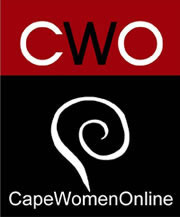CapeWomenOnline - Where Cape Women Shine
Your local venue for the women of Cape Cod to share their ideas, experiences and resources while inspiring each other in their life's journey
Inspire . Encourage . Network . Share
What's Happening To Our Environment? is a new column that explores issues that, in our humble opinion, are not getting enough press time. This is also a column for you to share your environmental concerns about issues that may not have a simple solution. By discussing them here, we hope to raise awareness of these issues and nudge those who CAN find answers into action.
In the second of this new series, we look at damage caused to Cape Cod's beaches by the Codium seaweed invasion.
Email your environmental concerns to Nicola@CapeWomenonline.com
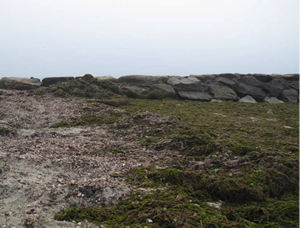
What's Happening To Our Environment?
Not all Seaweed is Created Equal
by Katie O'Sullivan
If you've walked along the south side Cape Cod beaches, you may have noticed a different type of seaweed piling up at the strandline. This seaweed is thick, spongy, smelly and bright green… and it's not even true seaweed.
Codium fragile, or "dead man's fingers," is an invasive algae from the Asian Pacific, first reported in U.S. waters near Long Island in 1957, and first seen in Buzzards Bay back in 1961. So it's not new. But it is a growing problem.
"Invasive" in the case of codium means a non-native species that is crowding out the native eelgrass that used to be dominant in Nantucket Sound and Buzzards Bay. A true seagrass that grew in underwater meadows, eelgrass beds formed communities that acted as nurseries, habitats and feeding grounds for many different fish, water birds and invertebrates.
As a "macroalgae," codium doesn't have a root system like eelgrass or other true seaweeds, but attaches itself with a "sticky foot" to cling to hard surfaces, like rocks and shells. Which leads to one of the serious problems with codium – it smothers the shellfish it attaches to (scallops, clams, oysters, snails, etc.) and kills them, causing them to be pulled from their beds and washed ashore.
Because of its thick-stalked, bushy structure, codium doesn't provide the same underwater habitat for fish fry or crabs as other native seagrasses do. It also doesn't have a distinct summer growing season like eelgrass or other seaweeds. It continues to spread, bloom, and die all year long, crowding out and shading other plant life, and washing up on beaches throughout the year in large amounts.
Not a New Problem
The Massachusetts Office of Coastal Zone Management (CZM) discussed the problem of codium in Cape Cod waters in a 2005 report, specifically citing the build-up of codium on West Harwich beaches. The Cape Cod Chronicle ran an article about the problems Harwich faced with this invasive species in August 2008, with photos of Harwich Port's Red River Beach.
Yet here we are today, at the end of 2013, and the problem isn't getting any better.
Both the article and the report blame environmental stress on our coastal waters as the main culprit to the spread of codium. Nitrogen loading from septic systems, road runoff, lawn fertilizers, and pesticides are key to both the die-off of eelgrass and the spread of codium.
A recent study by the Cape Cod Commission found that nearly 6 million pounds of fertilizer and 1.3 million pounds of pesticides are applied across Cape Cod annually, and most of it is residential use.
The Cape Cod Chronicle article cites a study done by the Harwich Natural Resources Department, which found that 98% of codium plants they catalogued were attached to the same type of shell, the "crepidula" or slipper snail, commonly found on south side beaches.
The researchers cited a symbiotic relationship between the slipper snails, the codium, and the eutrophication of our waterways. The codium needs a hard surface to cling to, and the slipper snails are limpets that thrive on organic waste, provided in abundance by the codium. The nitrogen-overloaded waters along the coast serve to fuel increased growth in both species.
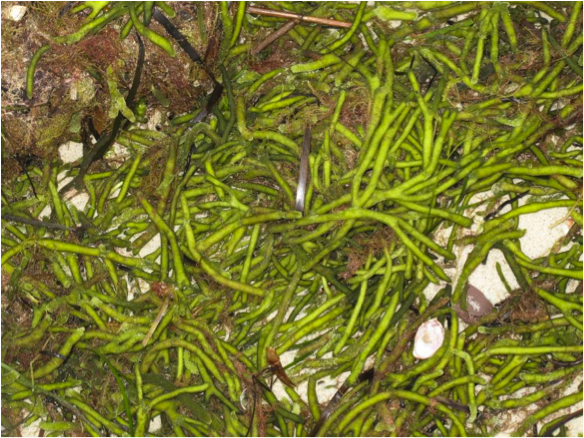
What To Do?
The best answer has always been to control nitrogen run-off. The Conservation Committees in towns across Cape Cod have been working for decades, trying to control nitrogen levels by restricting building nears dunes and waterways, requiring updated septic plans and installing both sewers and better sewage treatment facilities.
Homeowners and landscapers need to be better educated as to the use of native plants and natural management techniques to decrease the fertilizer runoff. Native plant species thrive more naturally on Cape Cod, with less care and feeding.
According to the Massachusetts CZM's website, "landscaping with native plants can help coastal property owners prevent storm damage and erosion, provide wildlife habitat, and reduce coastal water pollution - all while improving a property's visual appeal and natural character."
CZM's Coastal Landscaping website presents detailed information on the benefits of these landscaping techniques, step-by-step instructions on landscaping coastal areas, plant lists and photos, sample landscape plans, permitting information, and more.
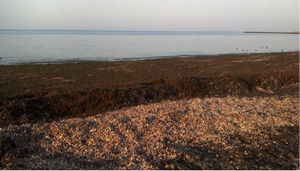
But what to do with the problem codium already washing ashore in such large, heavy amounts?
Old Cape Codders used to swear by mounding eelgrass around their roses and hydrangeas every fall, to both fertilize and keep them safe from salty winter winds. Unfortunately, it's been found that codium is totally unsuitable for this, or even for composting. The algae itself has an extremely high salt content and takes longer to break down than eelgrass.
One way towns have resorted to dealing with the codium is piling it to create barrier dunes. If you visit Red River Beach in Harwich, you'll find entire new dunes built with a combination of codium, slipper snail shells and sand. Over time, the codium eventually breaks down enough to support the growth of dune grasses.
In other places along the Cape's south shore, these barrier dunes serve to protect already existing dunes from winter coastal storms. The codium "dunes" break up the waves and are pulled out to sea, leaving the existent dunes intact.
It can be a struggle, though, as several inches of the weed can wash up in a single night, making it impossible to rake with conventional beach rakes. Five years ago, Harwich officials estimated that as much as 1,000 tons of plant material can accumulate along one kilometer of beach each summer. Today, there's even more.
Unless something changes, codium will continue to be a growing problem.
Photographs published courtesy of Katie O'Sullivan
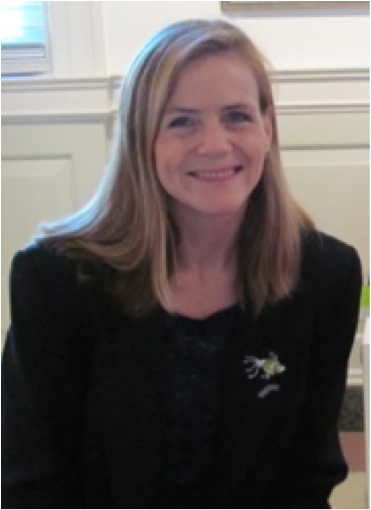
Katie O'Sullivan lives in Harwich with her family, and the big dogs that "make" her walk on the beach every day.
She is an author and regular contributing writer to this magazine.
Her third book, the young adult novel SON OF A MERMAID, is available from Crescent Moon Press. Check the Event listings for upcoming book signings, or visit her blog for details.
